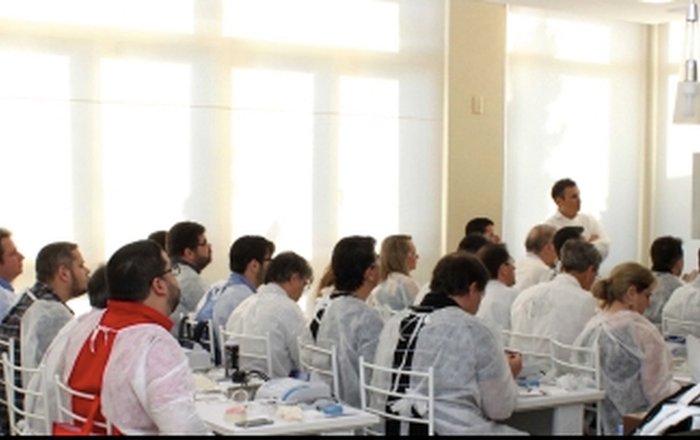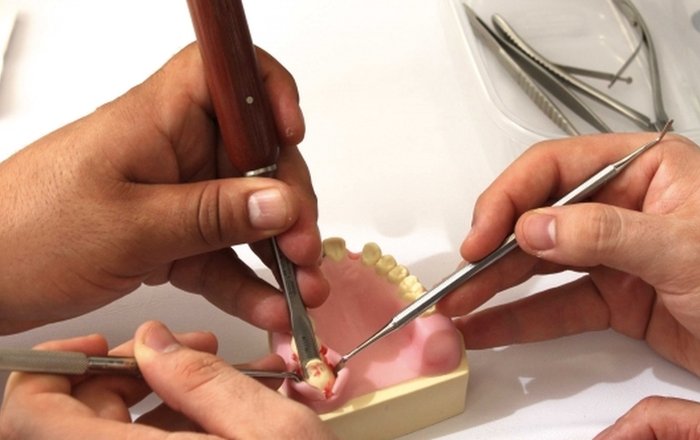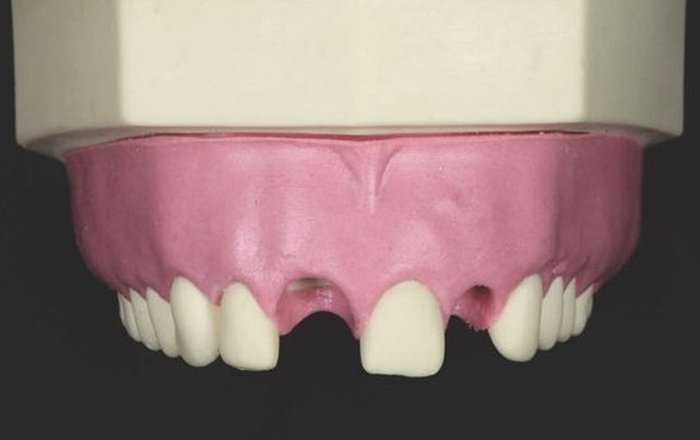IMMEDIATE DENTOALVEOLAR RESTORATION (IDR): Immediately loaded implants in compromised sockets
Register Now
Course Description
Introduction
Single-tooth replacement in the aesthetic zone has been one of the most common indications for dental implant placement. Compromised teeth are removed using atraumatic principles and immediately replaced by an implant-supported provisional restoration, with excellent aesthetic, biological, and functional results.
However, in cases of compromised sites with bone loss/gingival recessions, the clinical scenario presents a different dilemma. Until now, all developed surgical recommendations required long-term treatment with possible undesirable complications in the tissue architecture.
The Immediate Dentoalveolar Restoration (IDR) is a surgical and prosthetical technique established to broaden indications for immediate loading on individual teeth. In this way, tissue losses with varied extensions are reconstructed in the same surgical session of implant placement and provisional crown installation, reducing the number of interventions and keeping predictability on aesthetic aspects. The IDR protocol was developed more than 8 years ago from the need to minimize the treatment time and morbidity of reconstructive procedures used in these cases, which ultimately halve the patients recovery time and therefore allows dentists to finish cases much quicker.
In this course, we will review the scientific basis of the step-by-step technique of IDR and the indications for its use. A procedure which advocates minimally invasive surgery, flapless procedures, with predictable reproducible outcomes saving patient recovery time and early case completion.
Several case studies will be presented, showing one or more compromised socket walls of the teeth involved, with or without changes of the gingival margins, some with more than 8 years of clinical, radiographic and CT scan follow-up.
This course is presented as a 4 day program or a 2 day program: The 4 day program consists of two days theory and treatment planning, followed by a practical two day workshop aimed at both experienced and non experienced dentists. The 2 day program is offered as a stand alone program and consists of a two day theory lecture/treatment planning.
DAY 1 AND 2
LECTURE/TREATMENT PLANNING
- Immediate loading on intact sockets
- Considerations about the relationship between the thickness of buccal bone wall and ideal positioning of the implant
- Gaps in sockets: a new approach for selecting of implant diameter in post- extraction sockets
- Methods of measuring the degree of tissue loss in the regions involved
- Classification of socket bone defects
- Use of the maxillary tuberosity as a donor site – tissue biology
- Immediate Dentoalveolar Restoration protocol
- Emergence profile design on implant-supported prosthesis
- Immediate loading in alveolar bone defects with and without gingival recessions
- Indications for the use of cortico-cancellous and triple graft
- Case series report
- New researches on IDR technique
DAYS 3 AND 4 (IDR WORKSHOP)
LEARNING OBJECTIVES
- This course is designed for practitioners who desire to improve their management of compromised fresh extraction sockets.
- Understand the principles and indications of the Immediate Dentoalveolar Restoration (IDR) concept.
- Learn the step-by-step technique.
- Learn to evaluate the bone defect area for diagnosis and technical application.
- Learn how to harvest an autogenous bone graft from maxillary tuberosity.
- Management of the graft and complete reconstruction of the alveolar defect.
- Obtaining the ideal emergence profile of the crowns.
- Modern concepts in implant-supported restorations.
IDR WORKSHOP
8 AM - 12 PM
- Introduction
- Presentation of Immediate Dentoalveolar Restoration Technique
- Immediate Loading on Intact Sockets
- Gaps in Sockets: A New Approach for Selecting of Implant Diameter in Post- Extraction Sockets
- Methods of Measuring the Degree of Tissue Loss in the Regions Involved
- Indications of the IDR Technique
- Classification of Socket Bone Defects
- Immediate Dentoalveolar Restoration Protocol using Cortico-Cancellous Graft
2 PM - 6 PM
- Use of the Maxillary Tuberosity as a Donor Site – Tissue Biology and Surgical Technique
- Construction of the Ideal Temporary Restoration
- Emergence Profile Design on Implant-Supported Prosthesis
- New Technologies in Implant-Supported Restorations
- Immediate Loading in Alveolar Bone Defects With and Without Gingival Recessions
- Immediate Dentoalveolar Restoration Protocol using Triple Graft
- Advantages Obtained with the Use of Platform Switching Implants
- Bone Biology in the IDR Technique
- Complications and How to Avoid Them
- New researches and Clinical Studies on IDR
- Conclusions
Day 4 (IDR Workshop)
8 AM - 12 PM
- Hands-on using IDR models
2 PM - 6 PM
- Hands-on using IDR models
Hands-On Workshop Courses
Dr. Jeffrey Okeson
What Every Dentist Needs to Know About Temporomandibular Disorders (The Facts and The Fantasies) and A Participation Program
Read More



















